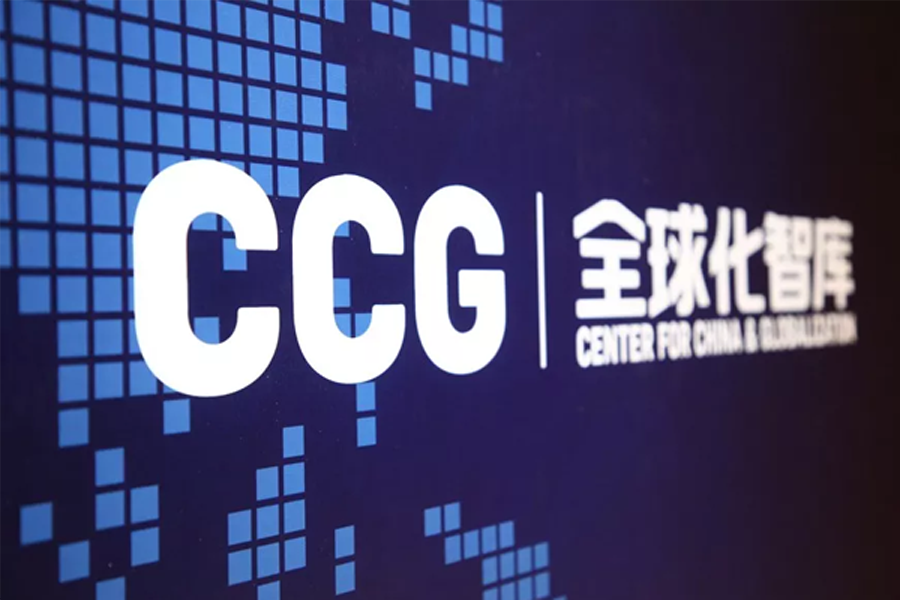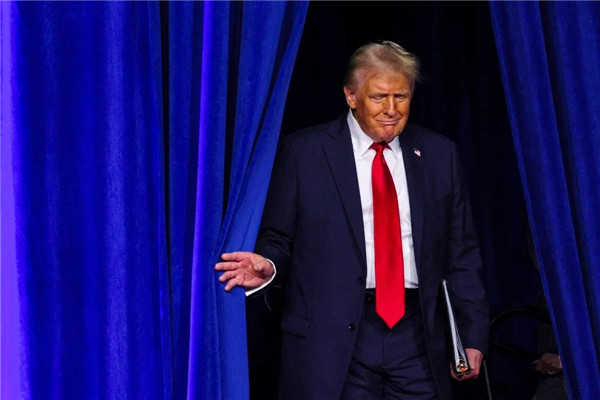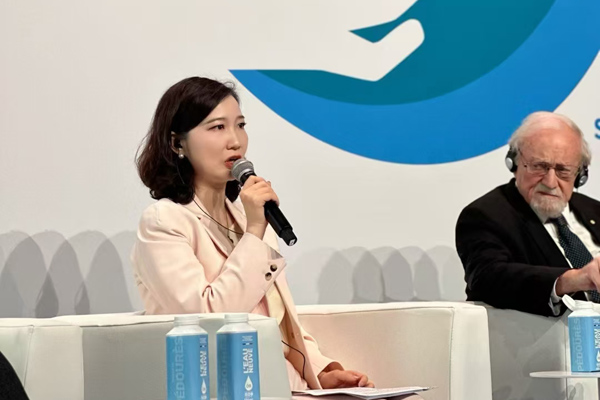How Trump Led the U.S. and China to the Brink of a Trade War
2018年5月7日
Chinese finance officials had high expectations entering the first major meeting with new American counterparts last summer. President Donald Trump had feted Chinese President Xi Jinping at his Mar-a-Lago resort a few months earlier, suggesting the two nations would enjoy warmer ties than his campaign-trail attacks had implied.
Those hopes were dashed by Trump’s Treasury Secretary Steven Mnuchin and Commerce Secretary Wilbur Ross nearly as soon as the July 19 talks began.
Mnuchin told his visitors that he wouldn’t sign a traditional joint statement to end the meeting. Nor would there be a joint news conference, a ritual moment relished by the Chinese. Ross, a longstanding China hawk, proceeded to lecture the foreign delegation. The meeting ended in confusion, accelerating a downward spiral in economic ties with China.
Now, as Mnuchin and Ross try to head off an all-out trade war, their talks in Beijing are made harder because of the Trump administration’s failure to nurture ties with China and the White House’s warring factions on economic policy.
The consequences of the collapse of the formal economic dialog still reverberate. Communication between U.S. and Chinese officials was reduced to a trickle, culminating in Trump threatening last month to slap tariffs on as much as $150 billion in Chinese imports.
“We are looking to change the discussion on trade,” Mnuchin said at the Milken Institute’s Global Conference in Los Angeles on Monday. “From the first meeting in Mar-a-Lago, President Trump has been very clear that the major issue was the trade imbalance, that we wanted to have reciprocal trade.”
This account of how relations frayed between the world’s two largest economies is based on interviews with more than a dozen current and former U.S. officials. Chinese officials did not respond to requests for comment.
Partners in Trade
China and Nafta nations are America’s largest trading partners
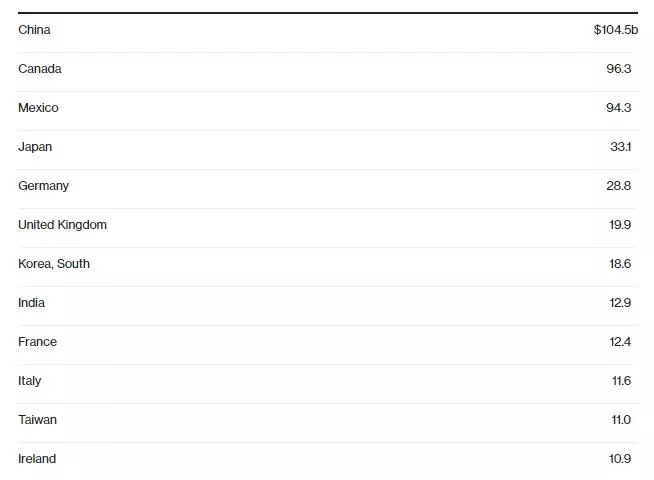
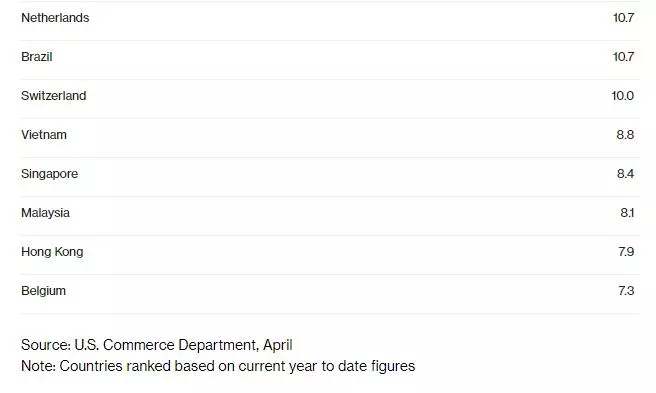
What Trump Wants
Mnuchin and Ross landed Thursday morning in Beijing and will meet Chinese officials in the afternoon and for dinner, the State Department said. Talks are set to resume Friday before the officials depart China’s capital in the evening.
China’s government won’t accept any U.S. preconditions for negotiations such as abandoning its long-term advanced manufacturing ambitions or narrowing the trade gap by $100 billion, a senior government official, who asked not to be named, said late Wednesday.
At a meeting in the last week, some senior advisers to the president indicated they weren’t sure what Trump would need to think he got a good trade deal, according to two people familiar with the matter. And another goal of the trip is for the U.S. to show China some respect for its help in pressuring North Korea to abandon its nuclear weapons program.
Mnuchin said the administration is “very concerned about forced transfers of technology” and “forced joint ventures” for U.S. companies seeking to do business in China. “These are all the issues we will be discussing,” he said at the Milken conference.
Chinese officials are open to discussing issues including technology transfers, widening access to China’s markets, increasing U.S. imports and Chinese industrial policy, said He Weiwen, a senior fellow of the Center for China and Globalization (CCG) in Beijing and a former Commerce Ministry official. They won’t bargain on narrowing Trump’s proposed tariffs or reducing the tariff rates, he said — China has demanded the tariffs be withdrawn altogether.
“China needs to see sincerity from the U.S.,” he said. “And only by withdrawing the 301 investigation and the $150 billion tariff threats can the U.S. show they are bona fide.”
Trump “wants a lot from China,” said Wang Tao, chief China economist at UBS Group AG in Hong Kong. “It covers a very wide range and it is confusing.”
Who Blinks?
China’s overall trade and current account surpluses have fallen significantly as a percentage of its gross domestic product since 2007, economists say. China’s current account surplus declined from 9.9 percent of GDP in 2007 to 1.4 percent in 2017, according to the International Monetary Fund.
And China correctly believes that the U.S. current account deficit, of which trade is the biggest part, reflects a persistently low savings rate relative to investment, said Jim O’Neill, former chief economist at Goldman Sachs Group.
The New York Times reported Monday that the Chinese will reject two expected demands from the U.S. delegation: that they cut their trade surplus with the U.S. by $100 billion and curb government subsidies for advanced industries such as artificial intelligence and semiconductors.
Cutting the Chinese trade surplus without raising the U.S. savings rate would simply shift the surplus to other countries such as Vietnam and Bangladesh, O’Neill said. And China won’t abandon its Made in China 2025 plan to subsidize advanced industries, said He, the former Commerce Ministry official.
But some experts are skeptical China’s government will stand its ground.
“If the U.S. pushes hard, the Chinese will blink,” said Ian Bremmer, president of Eurasia Group and the author of a newly published book, “Us Vs. Them: The Failure of Globalism.”
“If they have to give an openness of markets they will,” he said. “The Chinese think they’re winning long-term as long as they keep stability.”
The stakes could hardly be higher. Together, the U.S. and China account for more than half a trillion dollars in commerce. Companies from Apple Inc. to Ford Motor Co. rely substantially on Chinese suppliers, giving Beijing an additional pressure point to retaliate against U.S. tariffs.
Trump’s predecessor, President Barack Obama, practiced what’s known as “strategic patience” with China, exerting little public pressure on the country to rapidly open its markets to foreign competition. Even Trump’s political opponents give him credit for trying a different approach.
“One of the reasons that things are better is frankly that he has gotten a little tougher on China,” Senate Democratic Leader Chuck Schumer of New York said Monday at the Milken conference.
No Contacts
Before the July 19 meeting, Mnuchin had held more than a dozen phone calls and meetings with Chinese officials. Afterward, there were few publicly announced meetings between Mnuchin and the Chinese. He met twice with then-outgoing People’s Bank of China Governor Zhou Xiaochuan on the sidelines of major international summits.
Chinese officials, accustomed to robust engagement with their U.S. counterparts, gradually grew more alarmed after the July meeting. Vice Premier Liu He made a trip to Washington in February with three requests for the Trump administration: Establish a new economic dialog, name a point person on China issues and hand over a specific list of economic demands.
The U.S. did none of those things. Instead, Trump responded by imposing tariffs first on aluminum and steel imports — the U.S. accuses China of dumping the metals into global markets, hurting domestic suppliers — and then proposing levies on a list of more than 1,300 Chinese exports.
Within the Trump administration, there was meanwhile internal confusion and rivalry over the approach to China. Ross had led U.S. efforts to secure trade concessions from China in the early months of Trump’s presidency. But since he failed to close a deal with the Chinese on steel imports, Mnuchin and U.S. Trade Representative Robert Lighthizer have assumed more responsibility for the relationship.
Inside the White House, Trump’s two closest economic advisers hold disparate views on trade. Larry Kudlow, director of the National Economic Council, is a free-trade advocate who has repeatedly described Trump’s tariffs as mere proposals rather than a certainty. White House trade adviser Peter Navarro is a hawk who in 2011 published a book titled “Death by China” that portrays the country as a military and economic enemy.
“It’s good to have a diversity of opinion and when we go over there we will have one voice,” Mnuchin said in an interview with Bloomberg Television on Monday.
A breakthrough by Mnuchin’s delegation, which also includes Navarro, Lighthizer and Kudlow, would soothe relations between the countries and calm financial markets that have been in turbulence over the prospect of a trade war. But the outcome is uncertain if the U.S. sticks to hard-line demands the Chinese won’t accept.
Before they departed, Lighthizer tempered expectations. The U.S. and China could “spend the next year developing how we deal with each other over a period of time,” Lighthizer said, adding that the two countries are in the “early stages” of that process.
Asked what success in his talks would look like, Mnuchin said in the Bloomberg Television interview: “You’ll know it when you see it.”
‘Escalation Mode’
“The risk is that we remain stuck in escalation mode and we don’t shift to negotiations and defining what we want,” said Michael Smart, managing director at Rock Creek Global Advisors and former trade counsel to Democrats on the Senate Finance Committee. “We simply need to map out a plan and need to bring our allies in. We can’t do this alone.”
At the dawn of Trump’s presidency, the Chinese had reason for at least cautious optimism. Trump had attacked China on the campaign trail as an economic parasite on the U.S. But in one of his administration’s first official actions toward the country, the Treasury Department in April 2017 declined to accuse China of currency manipulation, keeping U.S. policy status quo.
The Xi summit followed, where the two leaders bonded at Trump’s Palm Beach resort. China offered minor concessions welcomed by the Americans, allowing more U.S. beef imports and opening its financial sector to greater U.S. investment. It was the sort of incremental progress the formal Comprehensive Economic Dialogue was designed to encourage.
But by July, Trump was dissatisfied. He didn’t want incremental advances. He wanted a wholesale overhaul of the relationship, with the goal of closing the U.S.’s $337 billion trade deficit with China — by far the largest of any American trading partner, and a major irritant to the president.
Frustrating Dialogue
The economic dialog, meanwhile, had itself come to be regarded inside and outside of Treasury as a resource-intensive exercise heavy on style and ritual and light on accomplishments — and not just by Trump’s political appointees.
“There was definitely frustration that we weren’t always making progress,” said Nathan Sheets, chief economist for PGIM Fixed Income, who served as Treasury undersecretary for international affairs in the Obama administration until 2017. “In the years that I was at Treasury, I saw an increased concern about the lack of progress in certain areas in terms of Chinese economic reforms, particularly business climate issues in China.”
But without the formal dialog, communications between U.S. and Chinese officials lack routine and coordination. Trump’s brash approach to negotiations, honed in the rough-and-tumble world of New York real estate, meanwhile clashes with Xi’s cautious strategy to open China to global market forces.
Trump’s own trip to China in November was rich in ceremony; Xi flattered his guest with a banquet in the Forbidden City. The business deals the U.S. president announced, however, were almost entirely non-binding agreements that would take years to bear fruit, if ever. Any deal that Mnuchin and his delegation strikes may be just as underwhelming, U.S. trade experts worry — and once Trump realizes it, a trade war could be unavoidable.
From Bloomberg,2018-5-3
